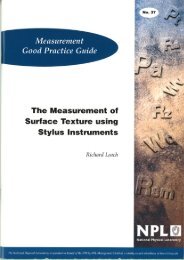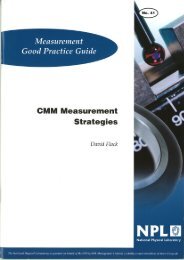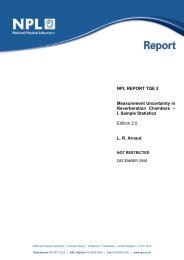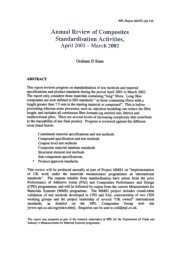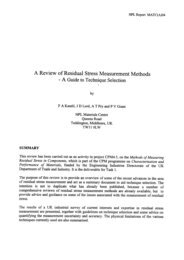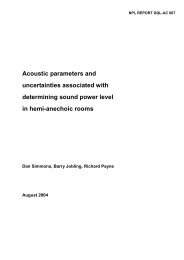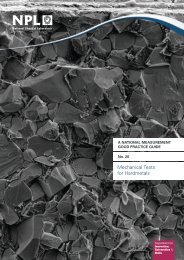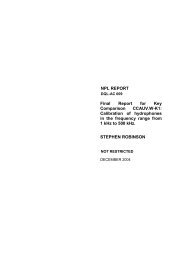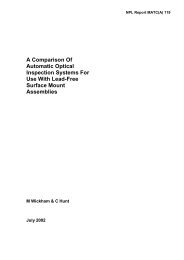Dimensional Measurement using Vision Systems - NPL Publications ...
Dimensional Measurement using Vision Systems - NPL Publications ...
Dimensional Measurement using Vision Systems - NPL Publications ...
Create successful ePaper yourself
Turn your PDF publications into a flip-book with our unique Google optimized e-Paper software.
<strong>Measurement</strong> Good Practice Guide No. 39<br />
1.2.2 Image processing<br />
Once the object of interest has been imaged correctly, measurements can be made. For this,<br />
some form of computer or microprocessor is required to process the image detected by the<br />
camera. A frame grabber, controlled by proprietary vision system software, is normally<br />
used to read the digitised image from the camera. Once the image is captured, it can be<br />
processed, with measurements being made <strong>using</strong> functions and algorithms in the vision<br />
system software.<br />
1.2.3 Communication<br />
The final process is to communicate the results of the measurements to the operator. The<br />
most common and simplest method is to graphically display the image and any<br />
measurements performed, on a monitor. However, this is generally not sufficient for<br />
vision systems that are integrated into a manufacturing process. With these systems it may<br />
be necessary to output the measurements to other devices, such as PLC’s (Programmable<br />
Logic Controllers), which are used for in-process control, or to file storage devices, so that<br />
the information can be retrieved for use at a later time. The ability to provide real time<br />
feedback into a process is one of the main advantages of vision systems.<br />
In configuring a vision system there are many different combinations of image formation,<br />
sensing and processing components and techniques available. Each system is therefore<br />
likely to have unique components to perform the task required of it. The following<br />
sections will describe the more common methods and devices used by vision systems to<br />
achieve these three key processes.<br />
2 MICROSCOPY<br />
<strong>Vision</strong> systems designed for measuring microscopic* objects are likely to use an optical<br />
microscope or similar high-powered lens arrangement. In order to make accurate<br />
dimensional measurements with such equipment it is advantageous to have an<br />
understanding of not only how the microscope produces an image, but also of the<br />
associated illumination equipment and the limitations to the measurement caused by the<br />
nature of light. *Note - for the purposes of this guide, objects less than 1 mm in size will be classed<br />
as microscopic and objects greater than 1 mm, macroscopic.<br />
The following sections, which are taken from the <strong>NPL</strong> Course: Optical Microscopy for<br />
<strong>Dimensional</strong> <strong>Measurement</strong> in Microelectronics, consider these issues in detail.<br />
3



